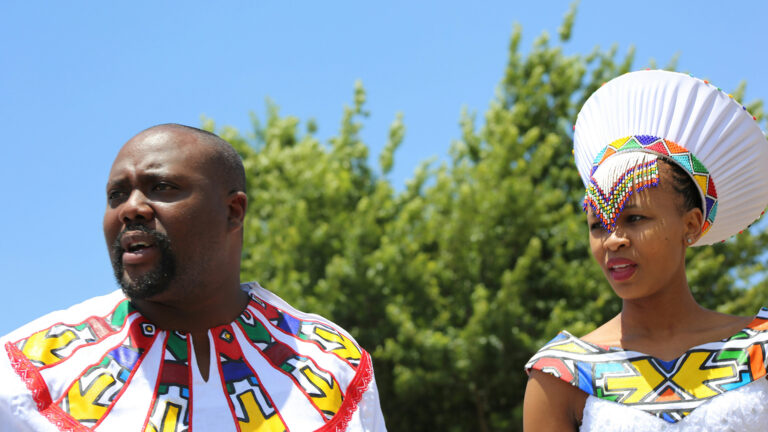Christmas can be a conflicting time of year for believers. It should be an opportunity to focus on Jesus’ incarnation and delight and celebrate that. Yet, alongside this celebration of Jesus coming to Earth, there are a lot of secular elements. And those elements drive people’s focus away from the real meaning of Christmas. Elves, flying reindeer and a jolly, white-bearded man in a red and white outfit add a fantastical element, far removed from the Christian narrative. But this begs a question. What should we do with Father Christmas (Santa Claus) and all that story brings with it at this time of year?
The Saint Behind Santa
As a young father, my children asked me the inevitable question of whether Santa Claus was real. Of course, they did so with deep hopefulness that all the magic surrounding Christmas were really true. I couldn’t bring myself to lie to them. Because I want them to trust what I say. What would happen later if they asked me if Jesus was really real, and I’d pretended Santa Claus was?
There was originally a man who led to the story we have today.
Rather than dismiss everything they knew about the cultural side of Christmas, I took a different route. In response to their question, I affirmed that there was originally a man who led to the story we have today. But the original man has a very different origin than the magical resident of Lapland or the North Pole.
I explained that the name Santa Claus derived from a good man. A Christian bishop who lived in the 4th century. Nicholas was the Bishop of Myra (modern-day Turkey). And the Church would later refer to him as Saint Nicholas. The Dutch Sinterklaas means Saint Nicholas and the legend that has developed around him was based on his life. Over time, the term Sinterklaas evolved into Santa Claus.
How Saint Nicholas Became Father Christmas
Why not point to the example of a godly Christian bishop who imitated the life of Jesus?
There are several stories about Nicholas’ life, including undergoing imprisonment for his faith during the Diocletian persecution. But the one that links him to the modern Santa Claus is the story of him helping an impoverished father of three daughters. The father fell on hard times and without being able to afford dowries for his daughters, wouldn’t be able to marry them off. Nicholas felt compassion towards the situation. He knew that the real temptation of prostitution lay ahead, if they remained unmarried and destitute. Not wanting them to be seen as the objects of charity, Nicholas secretly dropped three bags of gold into their house at night. This made it possible for their father to secure marriages for them.
Over time, Nicholas’ gift-giving was linked to the gifts given to Jesus at his birth. And that is how a “Santa Claus” figure came to be associated with secretly dropping off presents on Christmas Eve.
Did This Saint Punch a Heretic?
Another intriguing story about Nicholas comes from the First Council of Nicaea (325 CE).
This is a very late addition to the narrative of Nicholas’ life.
While African bishops were defending Trinitarianism from the heresy of Arianism, Nicholas is reported to have given them a hand—quite literally—by slapping Arian in the face. However, this is a very late addition to the narrative of Nicholas’ life, and is unlikely to be genuine. But it has created a fun meme at Christmastime: “My name is Nicholas and I am famous for two things: gift-giving and slapping heretics…and I have just run out of presents.’ For those hoping the story to be true, there are some records of a Nicholas of Myra in attendance at the council. Only there is no mention of a confrontation between him and Arius.
From Santa Claus to Father Christmas
Returning to the first story I mentioned, above, the name Santa Claus is tied to the generous actions of the historical Nicholas. The term Father Christmas, derived from a separate concept in England, was a way of personifying the festival, in the same way that some people refer to the spirit of Christmas. But, to be clear, it was a term associated with the secular elements of the festival and not the religious elements.
As stories crossed the Atlantic these two concepts slowly merged into one. And, to correct a misconception, Coca-Cola wasn’t the origin of Santa Claus dressing in red and white. Coke only started advertising with a Santa Claus figure in the 1930s. Yet the imagery had been set decades before that.
What Should We Make of All This?
As believers, there is a battle to keep people’s focus on the true meaning of Christmas. But we have to be realistic and acknowledge that the cultural elements of Christmas are not going away anytime soon. They have grown into a global tradition. So why not use these elements to point people to Jesus this Christmas?
Why not use these elements to point people to Jesus this Christmas?
Rather than simply dismissing the fantastical elements of Christmas that children seem to love, why not redirect their interest to the example of a godly Christian bishop who aimed to imitate his life on the life of Jesus?














